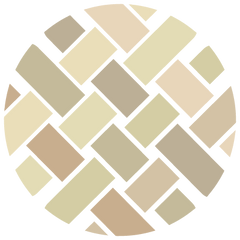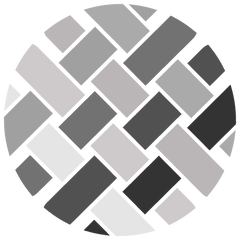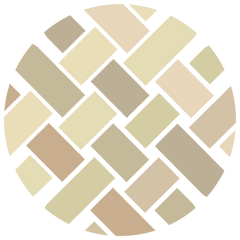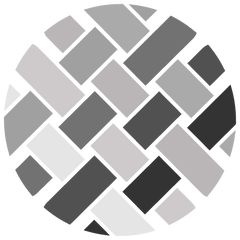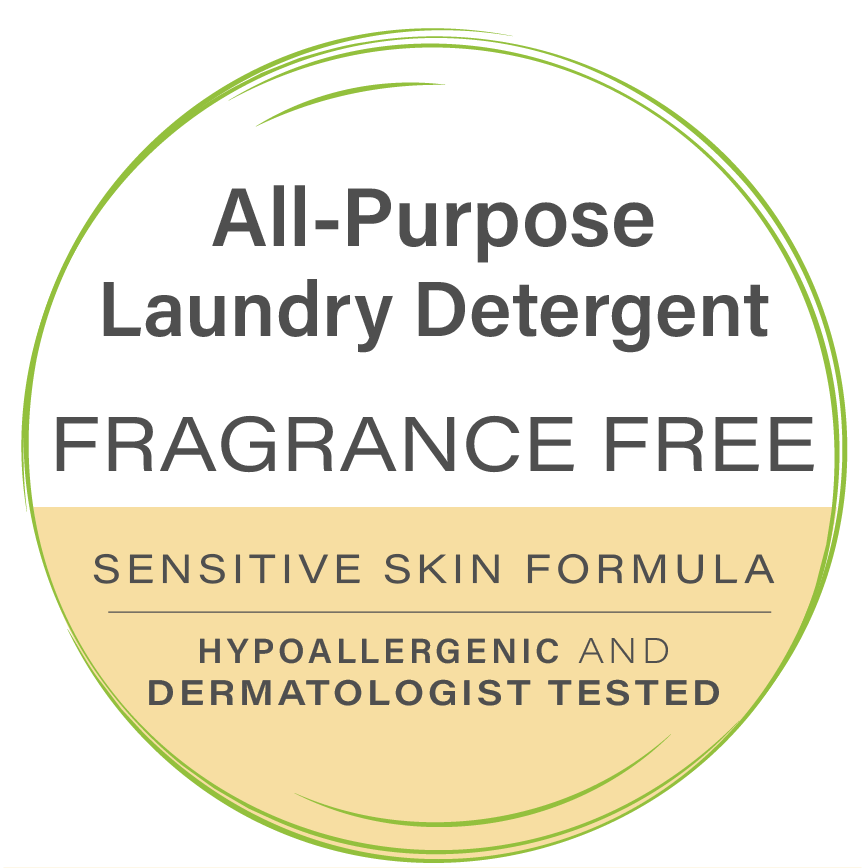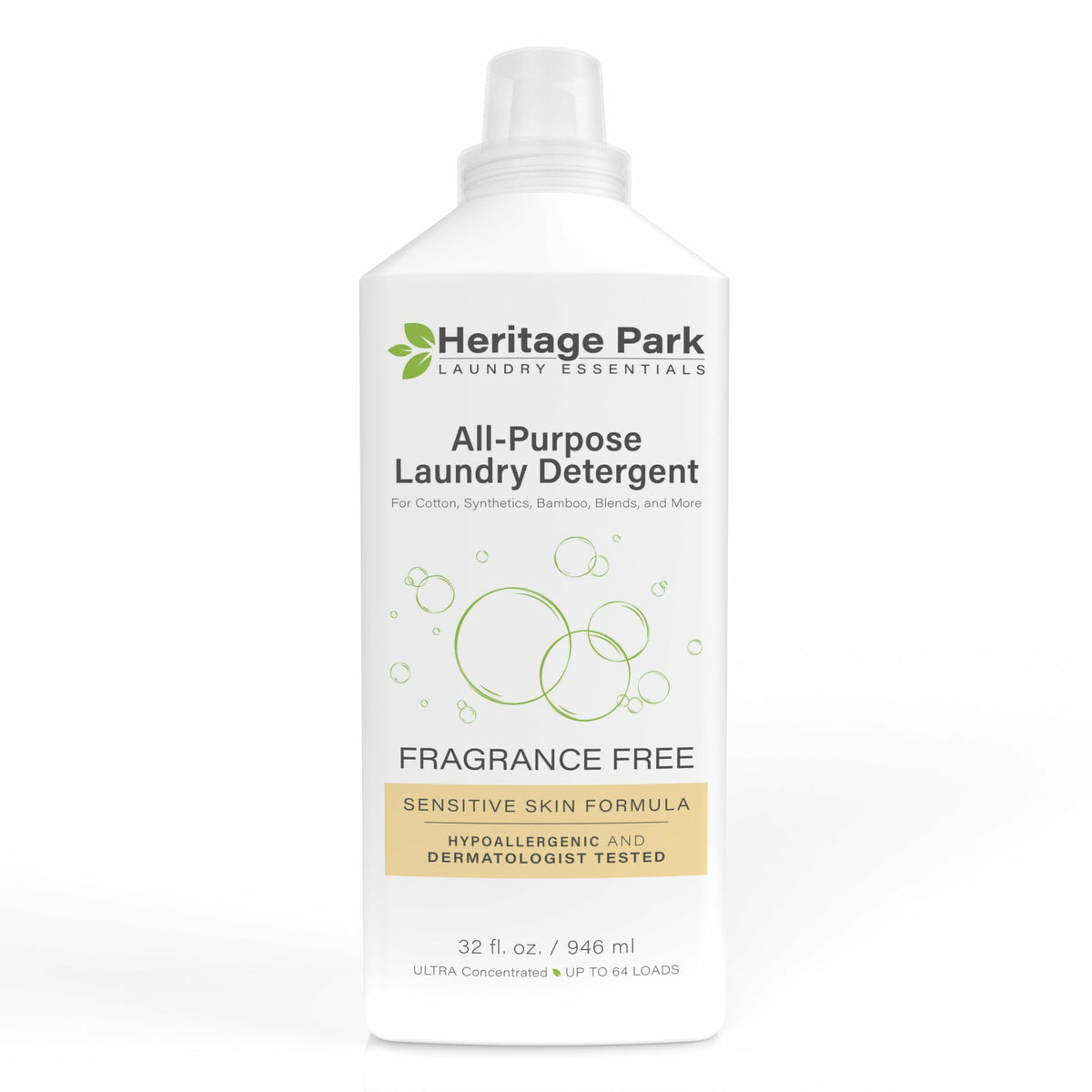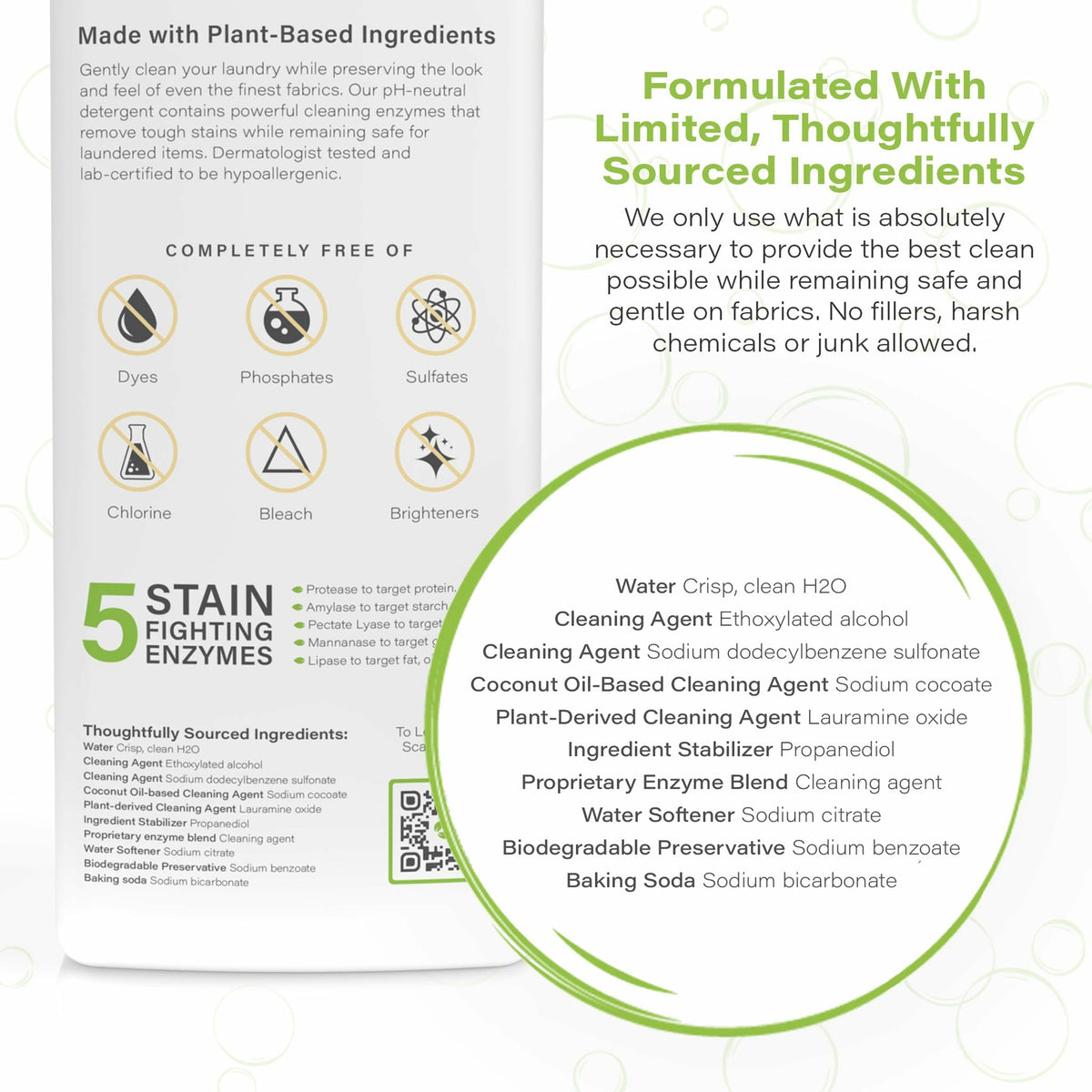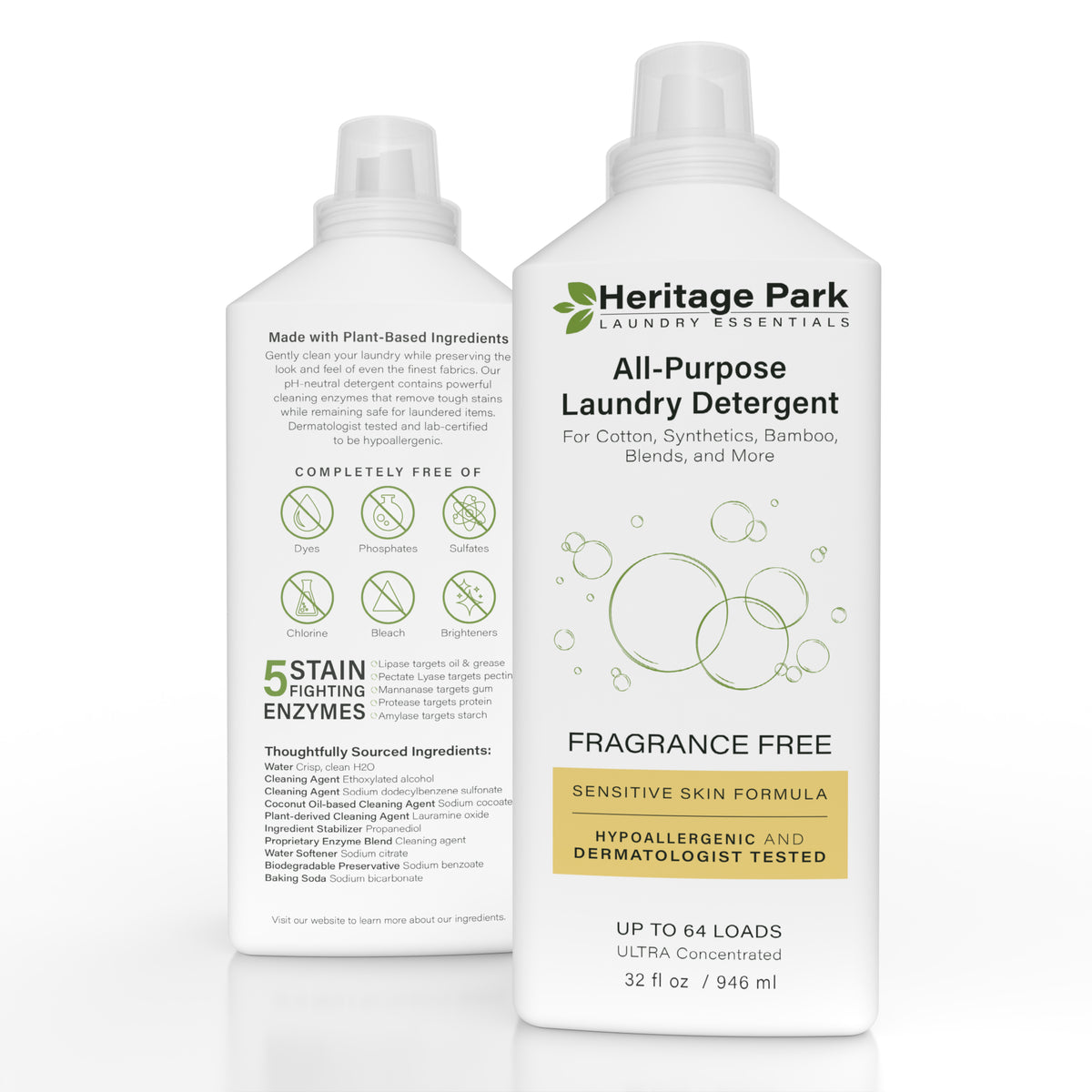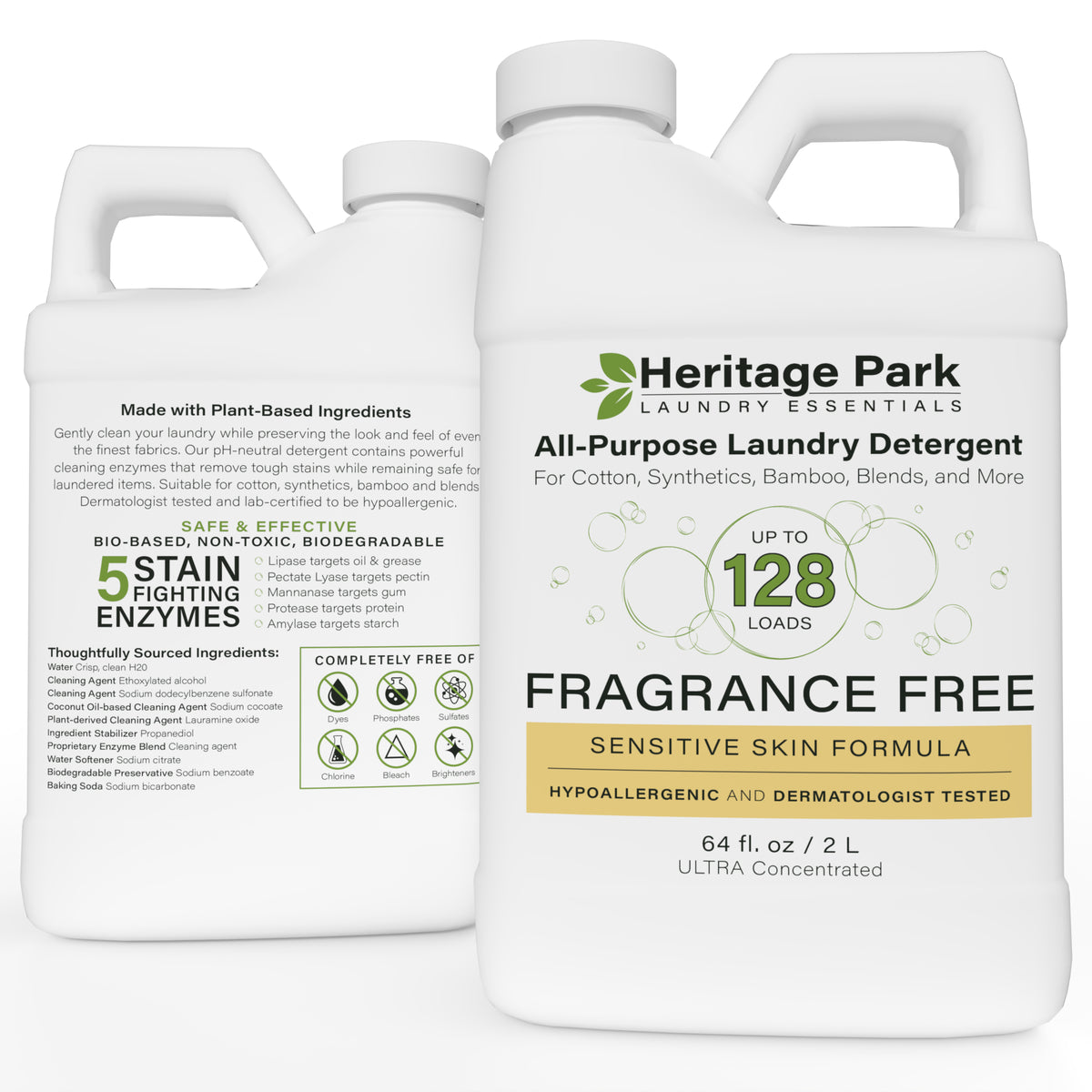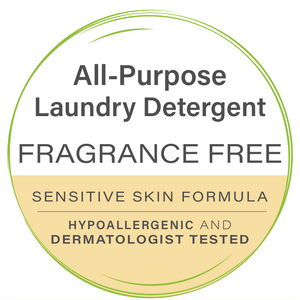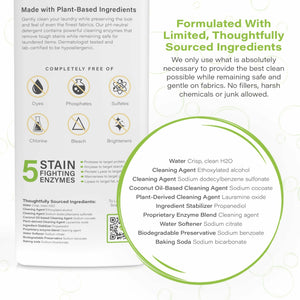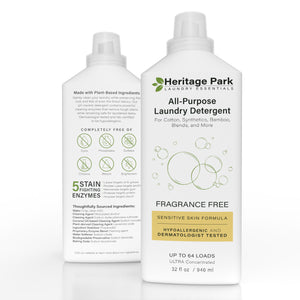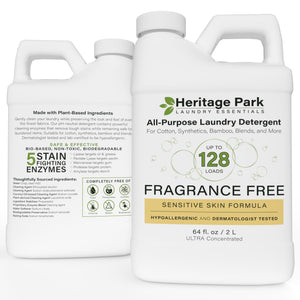This article delivers guidance on how frequently to wash all the pieces of your luxury bedding, from bedding essentials like your mattress pad to bed toppers like quilts, duvet covers, and throw blankets.
Key Takeaways
|
Luxury bed linens are a wonderful investment that -- with proper care -- can last for years to come. Whether you're investing in organic cotton sheets, a sateen sheet set, or a premium duvet cover set, proper care ensures long-lasting comfort and durability. This is why we share best practices for washing fine bed linens across in blogs, care guides, social media posts, and even product descriptions. This blog addresses one of the questions we get most frequently: how often to wash luxury bedding. Read on for expert guidelines and recommended intervals for maintaining every layer of luxury bed linens, from cotton sheets and duvet covers to quilts, throw blankets, and more.
Your First Step: Pick the Best Detergent
Fine bedding care begins with choosing the right detergent for your luxury sheets and duvet covers. void standard grocery store detergents, which often contain harsh chemicals like bleach and optical brighteners that can damage your cotton sheets and luxury bed linens. These chemicals weaken fabric fibers and diminish the comfort and softness of your bedding.
We recommend using a mild, pH-neutral detergent formulated to clean fine fabrics while preserving the integrity of luxury fiber. Among the premier luxury detergent brands, our go-to recommendation is Heritage Park All-Purpose Luxury Laundry Detergent. This concentrated formula is made with a short list of plant-based ingredients and is powered by a proprietary enzyme blend that targets dirt and stains. The fragrance-free variety is hypoallergenic, dermatologist-tested, and EWG verified as meeting the highest standards for safety and health. If you prefer a gentle fragrance, you can choose Lavender Mist, Shore Breeze, or Spring Magnolia scents.
IMPORTANT CARE NOTE: While enzyme detergents work well for cotton, linen, modal, bamboo, synthetics and blends, they should never be used on silk sheets or washable wool items. These natural fibers require specialized enzyme-free detergents like Heritage Park Silk and Wool Detergent, which comes in hypoallergenic, EWG-verified fragrance-free as well as Lavender Mist and Spring Magnolia varieties.

Essential Washing Guidelines for Your Luxury Bedding
Different bedding items require varying care frequencies to maintain optimal comfort and cleanliness. Here's our comprehensive guide for your entire bed ensemble:
Sheets and Pillowcases: Launder Most Frequently
Your fitted sheet, flat sheet, and pillowcase set should be laundered every 1-2 weeks. Regular washing maintains the crisp feel of cotton percale or the smooth texture of sateen sheets while ensuring a hygienic sleep environment.
Duvet Cover: Wash to Preserve Color and Style
Your cotton duvet cover or luxury duvet cover set should be washed every 2-4 weeks. This schedule helps preserve the pattern and color while maintaining the comfort of your bedding. Be sure to launder pillow shams from your bedding set at the same time to ensure a consistent look and wear.
“If you forgo a top sheet and sleep on a fitted sheet under your duvet cover, you should launder the duvet cover at the same interval as your bed sheet,” said Helena Hendricks, Fine Linen and Bath Associate Brand Manager.
Duvet Insert and Pillows: Maintaining Loft and Comfort
Clean these items every 6 months to maintain proper loft and support. Whether you prefer down or alternative materials, regular care extends their lifespan and ensures better sleep quality night after night.
Comforter and Blankets: Layers of Warmth and Freshness
Wash your comforter every 6 months and blankets every 2 months. This schedule keeps your bed fresh while protecting the material and maintaining warmth for those cold winter nights. Wool blankets and wool throw blankets may be laundered at greater intervals (and some may require dry cleaning).
Mattress Protection: A Base for Cleanliness and Allergy Prevention
Your mattress pad should be laundered every 2 - 3 months, while pillow protectors need more frequent washing every 2 - 3 weeks. A clean mattress topper helps protect your investment in quality mattresses while ensuring optimal comfort.
Luxury Linen Care Chart
|
Bedding Item |
Washing Frequency |
|
Sheets (Fitted Sheets, Flat Sheets, Pillowcases) |
1 - 2 weeks |
|
Duvet Cover |
2 - 4 weeks |
|
Duvet Inserts and Pillows |
6 months |
|
Comforters and Blankets |
6 months |
|
Mattress Pad |
2 - 3 months |
|
Pillow Protector |
3 - 6 weeks |
Keep in mind that these guidelines apply to all types of luxury bedding, from organic cotton sheets to premium duvet cover sets. Following this care schedule helps maintain the superior quality, comfort, and durability of your fine linens, ensuring the best possible sleep experience every night.
Always Follow Expert Guidance
Make sure to read and follow recommended care guidelines from the manufacturer. Some items, such as heavy wool blankets, will require dry cleaning. For more information about our luxury bedding options or care products, visit our linen care collection at Fine Linen and Bath. Our design team is also happy to answer your questions so feel free to call or email.
Our Clients Also Ask These Questions:
Is it OK to wash bedding once a month?
Some bedding, such as a duvet cover may be laundered at an interval as long as a month. Sheets, however, should be laundered much more frequently.
How often should you wash linen bed sheets?
Linen bed sheets should be laundered every one to two weeks, the same interval as any bed sheets.
How often should you wash your sheets if you sleep alone?
Every one to two weeks whether or not you sleep alone.
What happens if you don't wash your bed sheets?
Not laundering your bed sheets is highly unsanitary and can lead to a build-up of body oils, skin and hair care products, dirt, dust, allergens, and odors on the bed sheets.
How often should I wash pillows?
Plan to wash pillows every six months, more if you sweat often or sleep hot. Using a pillow protector can extend the time between washes.


